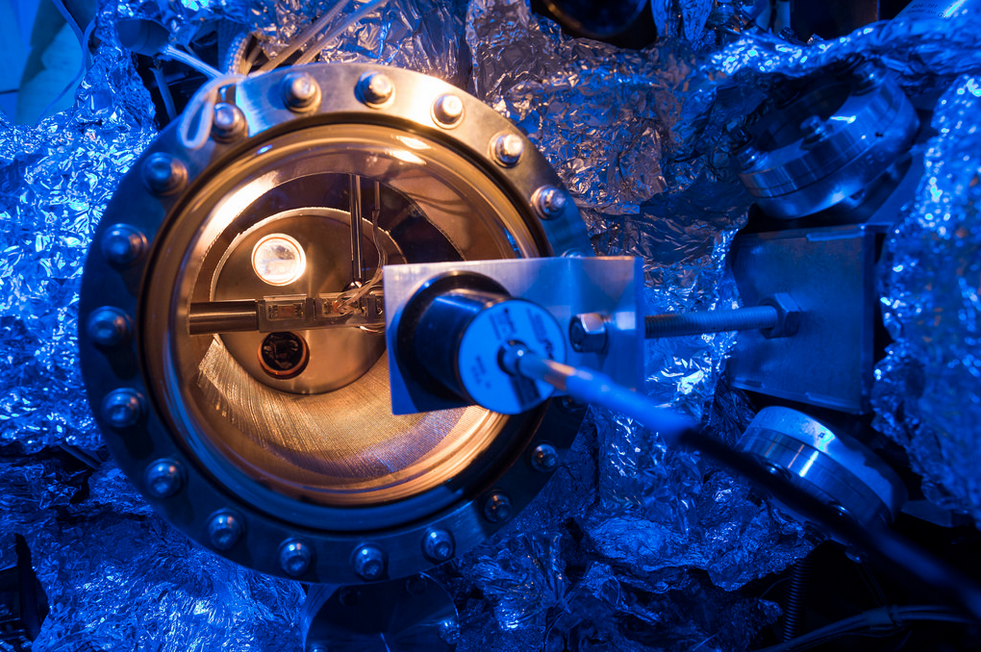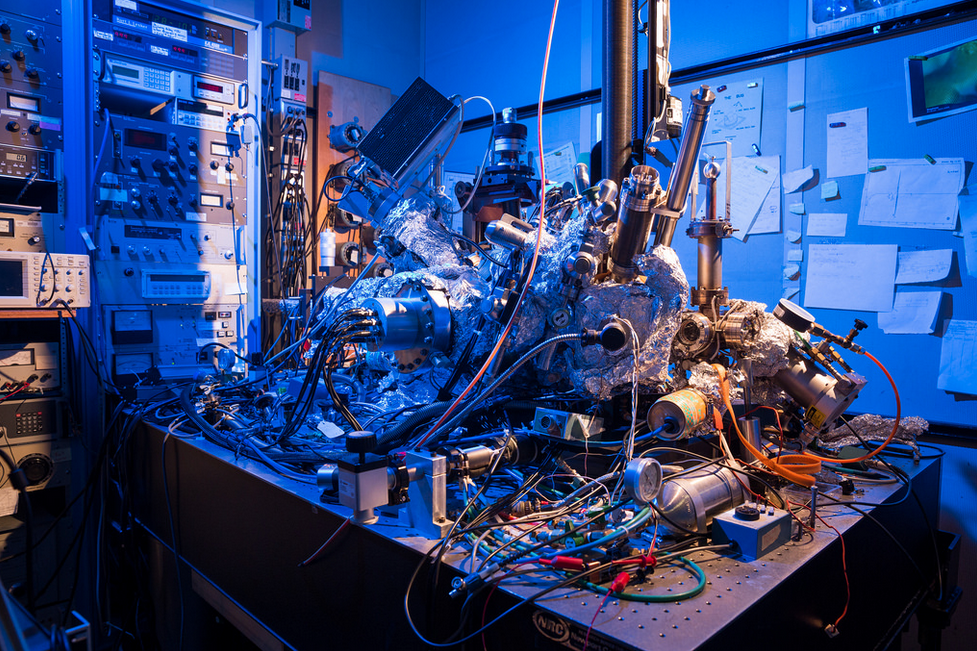
By Brian Santo
IBM has not only learned to create magnets out of single atoms of holmium, it has also been able to deliberately flip these atoms’ binary magnetic states up or down. In short, IBM has succeeded in creating the smallest molecular storage bit possible.
The company also reports that it has performed separate reads and writes on two adjacent atoms (a nanometer apart from each other), which suggests that atomic-level memory arrays might be possible.
Common commercial magnetic-storage systems like disk drives and semiconductor memory are both heading toward limits in physics that might, in the not-too-distant future, bar subsequent progress in increasing memory density.
Researchers have consequently been looking for alternative storage media; atomic-scale memory is an obvious investigation path. To get a sense of the orders-of-magnitude improvement represented by atomic-scale memory, the most advanced existing hard drives require roughly 100,000 atoms to store a single bit, IBM estimates .
For boggle value, the company calculated that if it could mass-produce storage media with single-atom bits, the 35 million songs available on iTunes today could fit on a drive the size of a credit card.
(Imagine the end of subscription music services! On the other hand, imagine the cost of 35 million songs…)
Prior to IBM’s announcement, various research teams around the world have been able to demonstrate manipulating the magnetic properties of various materials with as few as three to 12 atoms.
Yet while IBM’s results are legitimately encouraging, the likelihood of even an experimental memory consisting of single-atom bits appears to be pretty far off.

From a commercial standpoint, the conditions and techniques involved are thoroughly impractical, relying on equipment that is uncommon even for well-equipped research facilities. Writing a bit on a single atom of holmium is accomplished with current pulses using a scanning tunneling microscope, and reading that same bit relies on tunnel magnetoresistance.
More research will be required to develop a viable single-atom memory architecture. For example, the IBM researchers report, “the way in which individual magnetic centers are accessed remains unclear.”
Holmium might not be the ideal substance to work with on a commercial level, either. It isn’t particularly abundant, isn’t easy to isolate, and must be handled carefully. It is highly reactive in general and notably reactive with water. Its main purpose would be to occupy the space between dysprosium and erbium on the periodic table of elements but for one distinction: It has the highest magnetic moment of any element. That makes it prized for use in industrial electromagnets (as a magnetic flux concentrator) and also, not coincidentally, suitable for experiments with single-atom magnets.
But it might not be appropriate even for single-atom memories. While IBM can select the magnetic states of individual holmium atoms, and those states remain stable, they only remain stable for a period of hours. If researchers are going to continue to use the element, they will have to figure out a way to refresh the memory.
This isn’t necessarily a deal-killer; there are two general categories of semiconductor memory today — volatile (e.g., DRAMs) and nonvolatile (e.g., flash) — and volatile memory requires refresh. The issue with single-atom memory would be finding a mechanism for the process.
This is the second time in the last few years that IBM has been involved in creating a molecular-level bit. The company is conducting leading research on qubits — quantum bits — with which it is building experimental quantum computers.
Qubits can be multi-state and, when aggregated, can be used to represent a range of values. The new single-atom bits, by contrast, are similar to classic memory bits (binary digits) in that they can be flipped between two states to represent the 1s and 0s that modern digital computing relies on.
Source: IBM
Advertisement
Learn more about Electronic Products Magazine





